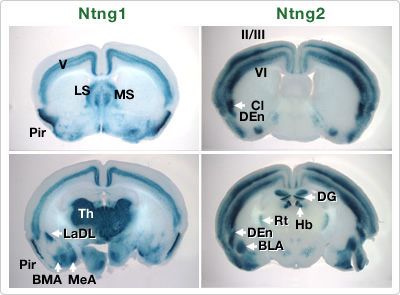
Certain brain functions in humans and primates have markedly developed during the course of their evolution, whereas almost all functional units and mechanisms of higher brain functions, such as emotion and cognition, have been preserved in many vertebrates. Therefore, rodents are useful tools for clarifying the molecular and cellular mechanisms underlying the formation of neuronal networks responsible for the processes of the mind, because genetic engineering techniques can be easily applied to rodents, as well as multifaceted analytical techniques. We aim to develop genetic engineering methods of manipulating the neuronal networks in mice and clarify the neuronal networks for behavioral control and their auxiliaries, i.e., molecular networks for information transmission. The early development of such a method for mice will form the basis for its application to experimental models using primates.
“Attention” underlies all cognitive and emotional functions and is one of the most developed brain functions in higher vertebrates, particularly higher mammalians. Failure in an attention-related behavior arises in association with very diverse pathological conditions and deterioration of brain functions, including general aging, Alzheimer’s disease, schizophrenia, bipolar disorder, and attention deficit hyperactivity disorder. To understand these pathologies, it is necessary to understand the mechanisms underlying the expression of individual behavioral traits.
Higher brain functions of higher vertebrates (particularly, mammalians) developed as a result of the formation of complex, but highly controlled, neuronal networks, signaling in the neuronal networks, and the evolution of molecular networks for synaptic plasticity. External information from sensory stimuli, i.e, bottom-up signals, and internal self-organized information, i.e., top-down signals, are integrated during synaptic transmission for relaying information, and converted into higher-order information. By this process, only necessary information is extracted from an excessive amount of sensory information, and much information is discarded. We will clarify the mechanism underlying this information integration. Attention is also the ability to control response time and enables the suppression of impulsiveness and the selection of a reasonable and efficient behavior. Understanding the neuronal and molecular mechanisms of controlling attention and impulsiveness will deepen our knowledge on the mechanism underlying the formation of the mind.
 Netrin-G1 and netrin?G2 are molecules specific to vertebrates and are attracting attention from the viewpoint of attention-related functions as follows. Netrin-Gs and their receptors netrin-G ligands (NGLs) are involved in the integration of transsynaptically independent information as a molecular basis. Netrin-G1 and netrin-G2 are expressed in independent neuronal networks, which overlap with networks for controlling a hypothetical attention-related behavior. Namely, netrin-G1 and netrin?G2 serve as both molecular markers of neuronal networks and molecules performing synaptic functions. Using these molecular bases, we will clarify the molecular and cellular mechanisms underlying the formation of neuronal networks in relation to the control of an attention-related behavior by multifaceted analysis of rodents.
Netrin-G1 and netrin?G2 are molecules specific to vertebrates and are attracting attention from the viewpoint of attention-related functions as follows. Netrin-Gs and their receptors netrin-G ligands (NGLs) are involved in the integration of transsynaptically independent information as a molecular basis. Netrin-G1 and netrin-G2 are expressed in independent neuronal networks, which overlap with networks for controlling a hypothetical attention-related behavior. Namely, netrin-G1 and netrin?G2 serve as both molecular markers of neuronal networks and molecules performing synaptic functions. Using these molecular bases, we will clarify the molecular and cellular mechanisms underlying the formation of neuronal networks in relation to the control of an attention-related behavior by multifaceted analysis of rodents.
In addition, neuron-astrocyte interactions are considered to play a significant role in local neuronal network functions. We will generate transgenic mice by genetically engineering molecules involved in neuron-astrocyte interactions to clarify the role of the control function of the local neuronal networks in higher brain functions.